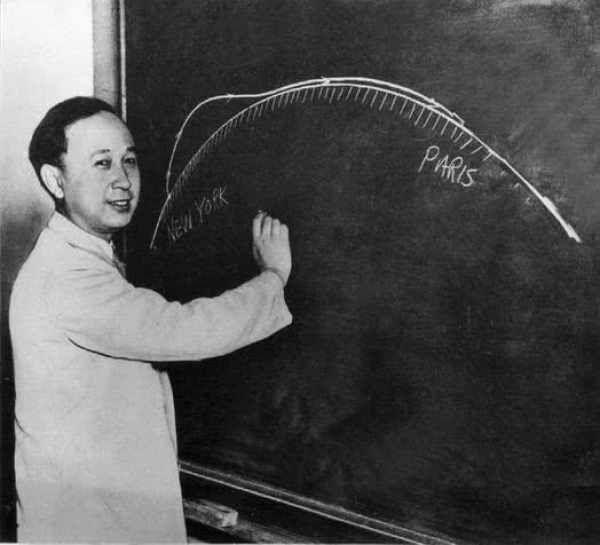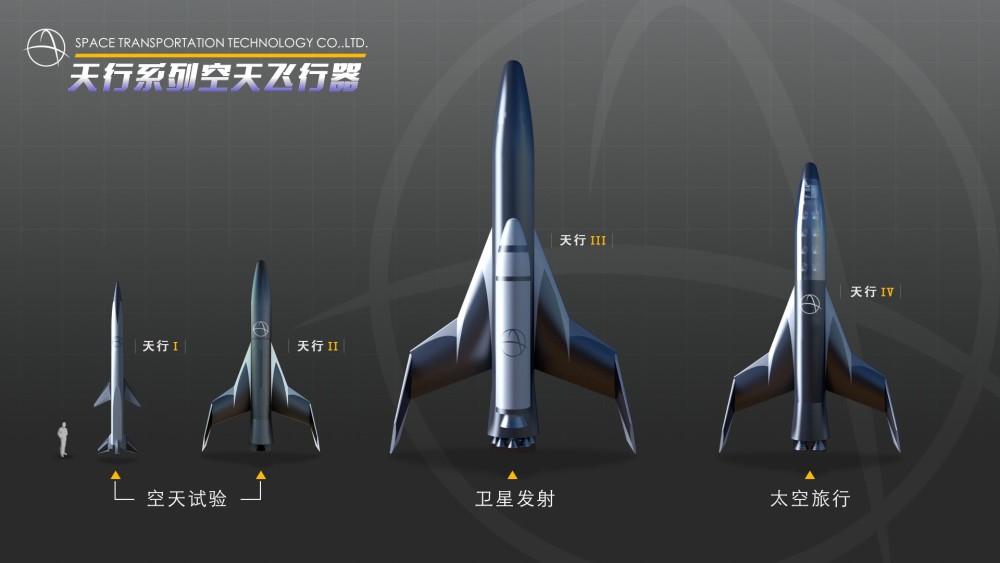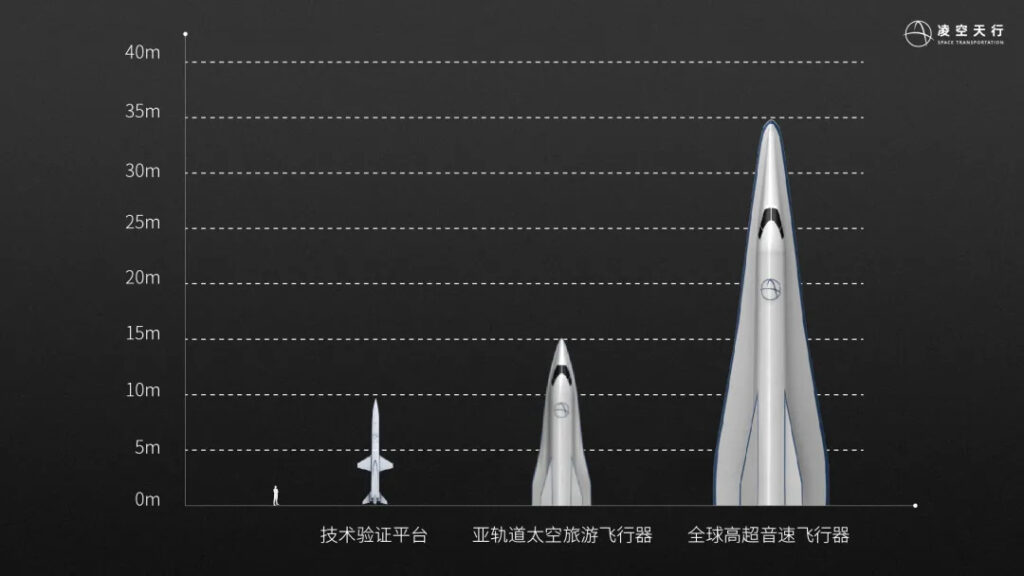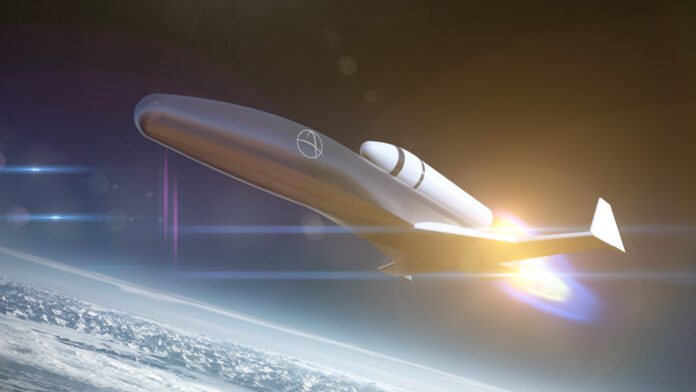Hypersonic planes are pretty, freaking, cool. Want to get from Sydney to New York in a few hours rather than 25? Or test a widget at Mach 10? Or just land a rocket horizontally, like an airplane? Hypersonic planes could be an answer. While the idea has seen various fits and starts over the decades (RIP Dynasoar, Aerospaceplane, etc), the 2020s are bringing about renewed interest from both state-owned and commercial companies in several countries around the world. One of the more interesting commercial players in this space is the Chinese hypersonic plane startup Space Transportation.
Space Transportation, the new kid on the block (of commercial hypersonics)
Space Transportation (凌空天行) has been on the scene for a little while, but caught a bit more of our attention in August when the company announced an 300M RMB Series A funding round. The company is based in Beijing and was founded in August 2018, and was known up to now as an aspiring suborbital and orbital rocket manufacturer, one among the 15-20+ commercial launch companies that have surfaced over the past 7 years.
It is not necessarily the most well-funded, the most advanced, or generally the most high-profile company, but it stood out regarding its reusable rocket technology choices: exploiting lift generated by a lifting surface. This was in contradiction with the consensus in the Chinese commercial launch sector that reusability would be achieved by a SpaceX Falcon 9-style retropropulsive landing. The CEO is Wang Yudong, a Tsinghua University graduate who has a long experience at CALT including positions as a chief designer and director.

As spaceplane activities on both sides of the Pacific increasingly attract attention due to the potential dual-use of such technologies, Space Transportation came into the spotlight as it performed a number of suborbital tests with clear lifting surfaces visible on pictures. This notably consisted of three suborbital launches:
- In April 2019, the first test flight of the Tianxing-1 rocket (in collab. with Xiamen Uni)
- Again in December 2019, a second Tianxing-1 test flight
- More recently in August 2021, with the first flight of the Tianxing-2 rocket
Let’s break these down and see which ones Space Transportation will actually develop in the future.
- Suborbital, hypersonic test vehicles
This type of product will 100% be in Space Transportation’s product portfolio because it already is: the Tianxing-1 is exactly that. The idea is to have a suborbital spacecraft speed up sufficiently to high Mach regimes (>Mach 5) to enable various customers to test their systems at hypersonic speeds.
This may seem like an expensive way to test things, and indeed aerodynamicists tend to prefer to use wind tunnel testing for experiments whenever possible. The issue is high mach number wind tunnels are very hard to manufacture, and expensive. Beyond a certain Mach regime it becomes necessary to use another technique (for reasons linked to the physics of fluids that won’t be discussed here), called the expansion tunnel, which can reach very high Mach numbers but only for a very short time.
For these extreme conditions, it becomes possible that actual tests (such as on-board the Tianxing-1 rocket) become more attractive, in terms of complexity, realism, and maybe even in price. The Tianxing-2, currently under development, will also be a hypersonic test vehicle, able to reach Mach 10. - Orbital Launch Vehicles
Orbital launch vehicles refer to rockets that are able to carry a payload (such as a satellite) and put it into orbit, with significant deltaV for the latter to stay in space. Basically, the launch vehicles that we are familiar with.
This would potentially be the Tianxing-3, and we’ve seen mock-ups on previous Space Transportation marketing material showing a two-stage rocket: a first stage spaceplane which would carry what looks like a solid-fueled second stage. The first stage would be able to glide back and land on Earth, leveraging reusability to lower costs. Unfortunately for spaceplane fans, in the diagram shown in this week’s round of funding announcement, the orbital spaceplane configuration is no longer apparent. - Point-to-point space transportation
Point-to-point space transportation is another one, with the idea of sending people or cargo across the globe in a rocket, which could cut down long-distance travel by a factor of 10-15x. Most people are probably familiar with this idea coming from SpaceX’s ambition to do this with Starship, and with a fancy video published in 2017 of what this would look like.
The idea of point to point space travel is actually much older than that, and can be traced back all the way back to the 1940s and to the works of engineers like Eugen Sänger. We can also mention Qian Xuesen, the father of Chinese space, who at the time was working at Caltech in the US.
We don’t have much information on what Space Transportation’s point-to-point transportation space vehicle would look like, but they do show such a vehicle in their most recent funding round announcement, and this is something that their CEO Wang Yudong has discussed at length, notably in a keynote presentation as early as 2019.

- Space Tourism
Last but not least, and definitely a very topical subject in 2021, is space tourism. This has been a constant in Space Transportation’s plans, with various mock-ups showing up in their presentations over the past years.


How likely is any of this to materialize?
If we were to do a little bit of speculation here: suborbital hypersonic test vehicles for sure (composed of the already operational Tianxing-1 rocket and the Tianxing-2 which just had the first flight). Orbital launch vehicles also seem quite probable, if a second stage to the current Tianxing rockets was to be developed, although this type of product is not mentioned in the recent funding round announcement.
However, the point-to-point space transportation is perhaps more unconvincing, due to safety issues and the very sophisticated propulsion technology that needs to be developed. But then, Wang Yudong does seem strongly driven by this activity if you watch his keynote from 2019.
As for space tourism… it’s hard to say. It may seem a bit less demanding from a technology point of view compared to point-to-point travel, but there’s the question of: is there an actual market for this activity in China? Especially in a society that could be perceived as a bit more risk-averse and with a current political environment where the rich tend to lay low.
Let’s remind ourselves that Space Transportation is still a very young company (founded in 2018!), and we will have to wait and see which path it will take, but when you are a commercial company, sooner or later it is the market that will drive your business decisions. With hypersonic space planes and the associated business in the high-growth phase, but also with many question markets, Space Transportation will certainly be a company to watch in the Chinese part of this very exciting sector.



